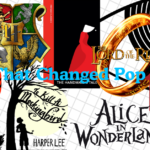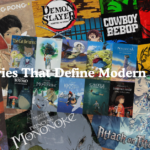I was 16 when I stumbled upon my first band tee. It wasn’t at a concert or a music store—it was at my cousin’s house. Hanging loosely on the back of a chair was a faded black shirt with The Rolling Stones’ iconic lips logo emblazoned across it. The red lips and tongue seemed to scream rebellion, freedom, and a little bit of mischief. I didn’t even know the band back then, but I knew I wanted to be part of whatever that logo represented.
That’s the magic of iconic band logos. They aren’t just designs; they’re cultural emblems. They encapsulate eras, attitudes, and art in ways that resonate across generations. But what makes a band logo so enduring? Why do some designs go beyond fandom to become universal symbols of identity and self-expression?
What Makes Band Logos Iconic?
Band logos are more than visual branding—they’re storytelling in its purest form. The best ones aren’t just eye-catching; they capture the essence of the music, the ethos of the band, and the cultural moment they belong to.
Take The Rolling Stones’ lips and tongue, for example. Designed by John Pasche in 1970, it wasn’t just a playful nod to Mick Jagger’s unmistakable stage presence. It was also inspired by the boldness of Hindu goddess Kali, blending cheeky irreverence with timeless symbolism.
Or consider Nirvana’s smiley face logo. That quirky, almost sinister smiley face with X-ed out eyes has become synonymous with the grunge movement of the ’90s—a mix of apathy, rebellion, and raw emotion.
And who can forget Pink Floyd’s prism? Simple yet profound, it mirrors their music: experimental, layered, and unforgettable. The spectrum of light spilling from the prism reflects both the complexity of their sound and the era’s fascination with psychedelic art.
These logos transcend design. They connect people to a feeling, a time, and a community. And over time, they’ve evolved from music merch into cultural artifacts.
Why Band Logos Matter Beyond Music
Wearing a band logo isn’t just about music—it’s a declaration. It says something about who you are and what you stand for.
Personal Identity: For fans, these logos are badges of honor. Wearing The Ramones’ seal or Metallica’s angular typeface isn’t just repping a band; it’s aligning with a mindset—punk defiance, metal intensity, or rock and roll swagger.
Cultural Connection: Logos create a bridge between generations. A teenager in 2024 might wear a Nirvana tee without ever having heard *Smells Like Teen Spirit*. Why? Because the design represents more than a band—it embodies a moment in cultural history.
Fashion & Streetwear: In streetwear, band logos have found a second home. They’ve inspired collaborations with major brands and become staples in vintage fashion. Designers draw on their boldness, simplicity, and storytelling to craft pieces that mix nostalgia with modernity. At *InkspiredBD*, we see this influence in how art, music, and culture intersect to inspire wearable statements.
How to Appreciate and Style Iconic Band Logos
So, how can you make the most of these legendary designs?
1. Decode Their Stories:
The next time you see a band logo, take a closer look. What does it say about the band’s music and philosophy? From the jagged edges of Slayer’s typography to the psychedelic swirl of Grateful Dead’s skull, every detail tells a story.
2. Choose Logos That Resonate:
Don’t just pick a band logo because it’s trendy. Find one that aligns with your personality or values. Are you a minimalist? Pink Floyd’s prism might be your style. Love rebellion? The Sex Pistols’ ransom-note design is the perfect match.
3. Incorporate Them Into Your Style:
Band tees aren’t just for concerts anymore. Pair a vintage Nirvana tee with ripped jeans and sneakers for an edgy streetwear look. Or layer a Pink Floyd hoodie under a tailored coat for a high-low mix that’s effortlessly cool.
4. Protect the Legacy:
Vintage band tees and hoodies aren’t just clothes—they’re artifacts. Care for them like you would a piece of art. Wash them gently, store them thoughtfully, and wear them with pride.
The Enduring Power of Iconic Band Logos
That Rolling Stones tee I spotted years ago? It’s still etched in my memory. Not because of the shirt itself, but because of what it represented—a gateway into a world of music, culture, and creativity.
Band logos like these remind us of the power of simplicity, symbolism, and storytelling. They’ve transformed from album covers to cultural touchstones, influencing everything from streetwear to self-expression.
When you wear a band logo, you’re not just wearing a design—you’re carrying a legacy. A piece of history. A slice of art that continues to inspire and connect people across the globe.
So next time you slip on a tee or hoodie with an iconic logo, take a moment to appreciate its story. Because in a world where trends come and go, these designs remain timeless, proving that sometimes, a simple image can speak louder than words. Ready to wear your passion? Explore InkspiredBD’s collection of designs inspired by music, art, and culture. Let’s celebrate the stories that shape us, one tee at a time.I was 16 when I stumbled upon my first band tee. It wasn’t at a concert or a music store—it was at my cousin’s house. Hanging loosely on the back of a chair was a faded black shirt with The Rolling Stones’ iconic lips logo emblazoned across it. The red lips and tongue seemed to scream rebellion, freedom, and a little bit of mischief. I didn’t even know the band back then, but I knew I wanted to be part of whatever that logo represented.
That’s the magic of iconic band logos. They aren’t just designs; they’re cultural emblems. They encapsulate eras, attitudes, and art in ways that resonate across generations. But what makes a band logo so enduring? Why do some designs go beyond fandom to become universal symbols of identity and self-expression?
What Makes Band Logos Iconic?
Band logos are more than visual branding—they’re storytelling in its purest form. The best ones aren’t just eye-catching; they capture the essence of the music, the ethos of the band, and the cultural moment they belong to.
Take The Rolling Stones’ lips and tongue, for example. Designed by John Pasche in 1970, it wasn’t just a playful nod to Mick Jagger’s unmistakable stage presence. It was also inspired by the boldness of Hindu goddess Kali, blending cheeky irreverence with timeless symbolism.
Or consider Nirvana’s smiley face logo. That quirky, almost sinister smiley face with X-ed out eyes has become synonymous with the grunge movement of the ’90s—a mix of apathy, rebellion, and raw emotion.
And who can forget Pink Floyd’s prism? Simple yet profound, it mirrors their music: experimental, layered, and unforgettable. The spectrum of light spilling from the prism reflects both the complexity of their sound and the era’s fascination with psychedelic art.
These logos transcend design. They connect people to a feeling, a time, and a community. And over time, they’ve evolved from music merch into cultural artifacts.
Why Band Logos Matter Beyond Music
Wearing a band logo isn’t just about music—it’s a declaration. It says something about who you are and what you stand for.
Personal Identity: For fans, these logos are badges of honor. Wearing The Ramones’ seal or Metallica’s angular typeface isn’t just repping a band; it’s aligning with a mindset—punk defiance, metal intensity, or rock and roll swagger.
Cultural Connection: Logos create a bridge between generations. A teenager in 2024 might wear a Nirvana tee without ever having heard *Smells Like Teen Spirit*. Why? Because the design represents more than a band—it embodies a moment in cultural history.
Fashion & Streetwear: In streetwear, band logos have found a second home. They’ve inspired collaborations with major brands and become staples in vintage fashion. Designers draw on their boldness, simplicity, and storytelling to craft pieces that mix nostalgia with modernity. At *InkspiredBD*, we see this influence in how art, music, and culture intersect to inspire wearable statements.
How to Appreciate and Style Iconic Band Logos
So, how can you make the most of these legendary designs?
1. Decode Their Stories:
The next time you see a band logo, take a closer look. What does it say about the band’s music and philosophy? From the jagged edges of Slayer’s typography to the psychedelic swirl of Grateful Dead’s skull, every detail tells a story.
2. Choose Logos That Resonate:
Don’t just pick a band logo because it’s trendy. Find one that aligns with your personality or values. Are you a minimalist? Pink Floyd’s prism might be your style. Love rebellion? The Sex Pistols’ ransom-note design is the perfect match.
3. Incorporate Them Into Your Style:
Band tees aren’t just for concerts anymore. Pair a vintage Nirvana tee with ripped jeans and sneakers for an edgy streetwear look. Or layer a Pink Floyd hoodie under a tailored coat for a high-low mix that’s effortlessly cool.
4. Protect the Legacy:
Vintage band tees and hoodies aren’t just clothes—they’re artifacts. Care for them like you would a piece of art. Wash them gently, store them thoughtfully, and wear them with pride.
The Enduring Power of Iconic Band Logos
That Rolling Stones tee I spotted years ago? It’s still etched in my memory. Not because of the shirt itself, but because of what it represented—a gateway into a world of music, culture, and creativity.
Band logos like these remind us of the power of simplicity, symbolism, and storytelling. They’ve transformed from album covers to cultural touchstones, influencing everything from streetwear to self-expression.
When you wear a band logo, you’re not just wearing a design—you’re carrying a legacy. A piece of history. A slice of art that continues to inspire and connect people across the globe.
So next time you slip on a tee or hoodie with an iconic logo, take a moment to appreciate its story. Because in a world where trends come and go, these designs remain timeless, proving that sometimes, a simple image can speak louder than words. Ready to wear your passion? Explore InkspiredBD’s collection of designs inspired by music, art, and culture. Let’s celebrate the stories that shape us, one tee at a time.




